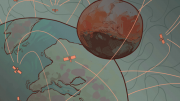Hello again readers of the Manitoban and welcome to late June. It is just about that time to start planning your doom — I mean future — for this fall and what better way to get back into the swing of things but by learning a little about something even smaller and more insignificant than most of us generally think ourselves to be. Let us examine the Blarina brevicauda, a northern short-tailed shrew. This little buddy is only about 120 mm long and weighs no more than 30 grams.
Whilst backpacking about the scenic Canadian countryside this summer, you might expect to meet Blarina in any one of the southern parts of the provinces, from breathtaking Saskatchewan all the way east to balmy Nova Scotia. As usual with any summer vacation, it is best not to get too friendly with strangers, especially considering the northern short-tailed shrew is the only poisonous mammal in North America.
These shrews use venom produced by the salivary glands along grooves in their teeth to subdue their prey, which are primarily invertebrates but also include other small mammals and amphibians. The venom keeps the prey alive, yet immobilized for convenient, hassle free meals. Shrew venom contains both neurotoxins that cause paralysis as well as hemotoxins that prevent clotting, destroy red blood cells and generally make a big mess out of the internal organs. One “highly reliable” source — Wikipedia — states that the venom of Blarina brevicauda, when intravenously injected, is enough to kill 200 mice. What kind of mice and how many died in quest of that most valuable information will remain a mystery.
In general, shrews are small, terrestrial mammals that forage almost continuously for food to satisfy their raging metabolism. They must eat up to 90 per cent of their own body weight each day in order to survive, especially in the frigid wasteland us Winnipeggers call home. In fact, these little buggers are so dedicated that they don’t even bother to hibernate. They just run around like mad all winter in a desperate search for food.
Next to eating, the shrew’s favourite pastime is, you guessed it, sex. Females can have up to 10 litters per year, assuming they manage to survive that long. Shrews live to around 30 months of age but just over 10 per cent of individuals manage to make it past their first year. They have poor vision but excellent senses of smell and hearing. In fact, our friend Blarina uses a form of echolocation — just like your friends the bats and whales — in order to travel speedily along the burrows it digs under grasses and packed snow. The only other terrestrial mammals known to use echolocation are tenrecs but you’ll have to look them up for yourself because this is a one animal per issue kind of deal.
It turns out that shrews and I have a lot more in common than I thought and I still don’t know what the hell Shakespeare was talking about.




